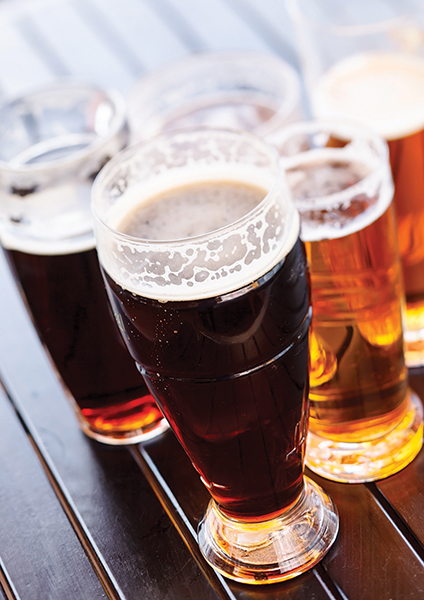

Jack Kenny, Beer Columnist
By Jack Kenny
Ours is a time of abundance of beer. Production and supply are well-honed and at their peak, styles proliferate, public interest and education are widespread, and consumption is a boon to the economy. But there were times in the 20th century when these claims could not be made, when the supply of beer was limited or cut off.
The major interruption in the beer business was, of course, Prohibition, which started 98 years ago and lasted for 14 years. But two other significant events disrupted the production and consumption of beer in the United States: World Wars I and II.
The Great War, as the 1914-1918 horror was known at first, wrecked Europe and its people, and took its toll on every business. Europeans felt the impact on their beer as breweries were destroyed and their metal remains used to make weaponry. Some French beer sellers employed political tactics to survive: they relabeled Czech pilsner kegs and bottles as “Biere de la Meuse,” for a French river, because the Czechs had become the enemy.
British Prime Minister David Lloyd George, though not a teetotaler, considered drink to be a greater threat to England than Germany and Austria, and the temperance movement there grew. The other big factor was lack of industrial resources. Everything was poured into the war effort.
In the U.S., the temperance movement that had begun in the 19th century was stronger than ever by the time of the Great War. Sympathetic politicians were elected to shut off the beer and liquor business nationwide. That they did.
World War II was different. Beverage alcohol was back and it was not threatened by the morality people. Yes, it took some time to recover from Prohibition – retooling or rebuilding breweries, establishing distributorships and retail businesses under nascent federal and state laws, but the industry took hold and grew.
What did have an impact, again, was the need for industrial support – materials – to maintain military strength, and that made life tough for the beer business. But the beer industry was viewed positively by the government powers, and our soldiers were supplied with malt beverages.
The British, allied with the Soviet Union and France, to some extent, found themselves thirsty during the conflict. In June 1944, when the USA entered the war on Normandy’s beaches, they joined the English in wishing for beer with a familiar taste, not so much what the French offered, which was not in good supply anyway.
According to Mike Tysarczyk of the Beer Museum in Pittsburgh, U.S. military top brass, along with the government, stepped in to help. The Department of Agriculture ordered American brewers to keep 15 percent of their annual production for distribution to the troops. The beer was shipped in cans of olive drab color to prevent snipers from seeing reflections from shiny metal.
Anti-German sentiment can’t be overlooked. The German brewing tradition was strong throughout the eastern half of the U.S., but those brewers felt the sting of patriotic attitudes and some suffered declines.
The Brits used aircraft to move beer. Pilots in the Royal Air Force used spare fuel tanks to carry the precious cargo, and the aircraft, dubbed “flying pubs,” could move about 90 pounds of beer per flight.
The beers of war were basic brews, nothing special, and on the light side in terms of ingredients and strength. That might have had an influence on future beer preferences. In 2015, Joe Pinsker wrote in The Atlantic: “The palates of a generation of American soldiers grew accustomed to the weak beer that was standard in military rations.”
The postwar culture became interested in a lager-style beer that went down easy and would complement a cornucopia of foods. The public wanted pale, streamlined and modern beers, and in the words of brewing leaders, an agreeable, mild hop flavor and no bitter aftertaste. According to author Maureen Ogle, the trend had begun before the war with the spread of processed and less flavorful foods.
In 1980, of course, commercial light lager was joined by a newcomer, eventually known as craft beer. Today they share the nation’s beer palates, competitively but often with cordiality, making ours a land of beer that appeals to one and all.
Jack Kenny has been writing The Beer Column for The Connecticut Beverage Journal since 1995. Write to him: thebeercolumn@gmail.com.



